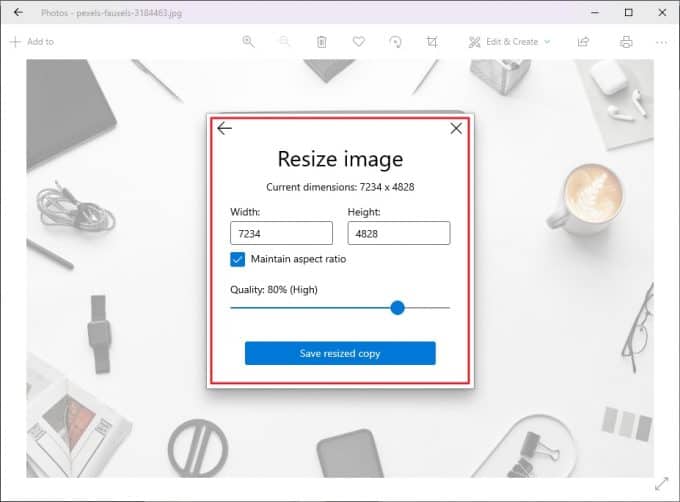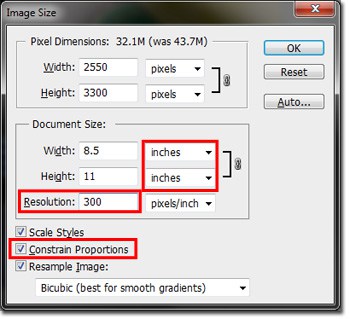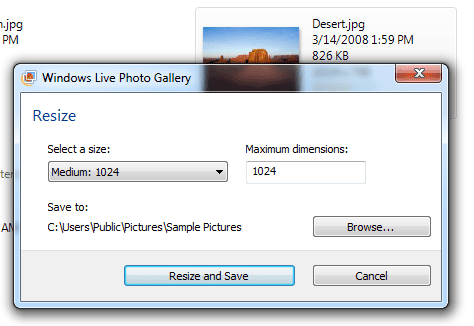Are you looking for the ways how to resize an image in 2022? Taking photos has gotten so simple thanks to today’s sophisticated technology that having hundreds of images in storage is no longer unusual. However, as camera quality improves, the file size of photos grows higher, posing a storage issue.
Resize an image might imply more than just cropping it; it can also include pixel manipulation to minimise the file size. If you’re trying to send a large number of photos to someone but the file size is too large, you’ll need to compress the image before sending it. This is where image scaling comes in handy.
With the right tools to resize an image, you can alter the picture and file size of a particular image to fit your needs. In this article, we’ll show you how to resize an image for a range of devices.
How do you resize an image on an Android device?
An Android phone or tablet does not come with any applications for resizing images out of the box. The Photos app that comes with Android can be used to view files, but there are no editing capabilities. Fortunately, the Google Play Store has a number of handy apps for Android smartphones.
The sort of app you get depends on your device and Android version, but the most of them have pretty similar features. To resize an image, you must first pick one or more images from your album, then select the resolution you wish it to be resized to. Here are a few useful apps that have received high ratings on Google Play:
1. Reduce and resize photos
Photo Compress and Resize is an easy-to-use and intuitive image size reducer that allows users to crop images and delete undesirable areas of the image. It can execute batch image reductions and choose and decrease several files at the same time.
2. Photo and Image Resizer
The Photo & Picture Resizer app is a useful resize an image for Android devices that allows users to rapidly modify the size of single or many photographs with a few easy touches. The Photo & Picture Resizer, which is designed to match the original picture aspect ratio by default, makes it simple to submit photographs to numerous social media sites. The programme also allows you to batch process a number of photographs at once.
3. Q Reducer and Photo ReducerReduce from Q Lite
The Q Reduce software is a simplistic, no-nonsense file size reducer that does one thing well. The lite version only reduces individual photographs, whereas the full version includes batch reductions as well as additional image editing features such as crop selection and photo archiving.
On a Windows PC, how do you resize an image?
A PC will frequently come with apps that allow you to edit photographs, making it one of the most versatile tools for image editing. In addition, PC users have access to some of the best photo editing software.
We’ll go through a couple apps as well as some image reduction tips:
1. Start by painting
MS Paint will be installed by default on all Windows versions prior to Windows 10. It can resize photographs very effortlessly, while being quite basic in terms of photo editing features.
To do so, take the following steps:
- Open the image by right-clicking it and selecting “Open With,” or by going to the Paint top menu and selecting “File,” then “Open.”
- Click “Resize” under “Image” on the Home tab.
- Adjust the image size as needed, either by percentage or by pixels.
- When altering by %, select Maintain Aspect Ratio to keep the image size constant.
- Click the OK button.
2. Create a three-dimensional painting
The Paint programme in Windows 10 has been enhanced to include a lot more features than the original. However, the interface has changed significantly, and people who are accustomed with the prior version may struggle to traverse the choices.
Follow these steps to resize an image in Paint 3D:
- Open the image in Paint 3D.
- In the top menu, select the Canvas tool.
- You can alter and resize the image by pixels or percentage in the right-hand menu.
Resize Image with Canvas boosts or decreases the Paint 3D canvas scale in proportion to your adjustments, and lock aspect ratio preserves the right image size balance. To save any changes, go to the menu and then save.
3. Adobe Photoshop (version 3)
You can’t really think about photo-editing without mentioning Adobe Photoshop, which is widely regarded as one of the best image applications available. Although not free like the others, the variety of this programme makes it well worth the money.
Follow these methods to resize an image in Photoshop:
- In the top menu, select “Image.”
- Select an image size.
- After you’ve adjusted the measurements to your liking, click OK.
- Batch resizing is also possible, but it will necessitate recording actions, then selecting File, Automate, then Batch.
4. Irfanview
Irfanview, a free and widely used image viewer, also includes the ability to resize images individually and in groups without the need to first record programme operations.
It’s a very useful tool to have, and since it’s free to download and install, there’s no excuse not to try it out.
In Irfanview, you can resize photos as follows:
- Open the image by right-clicking and selecting “Open With,” or by selecting File, then “Open” from the Irfanview menu.
- On the top menu, select Image, then Resize/Resample.
- Make any necessary adjustments to the image values, then click OK.
Opening Irfanview, selecting File, then Batch Conversion/Rename allows you to convert multiple images in a single folder at once. All images in the folder will be resized automatically after that.
On an iPhone, how do you resize an image?
Although the Photos app included with your iPhone allows you to crop images to a certain size, it lacks the ability to reduce their resolution or file size. However, there are a few programmes available on the Apple App Store that perform an excellent job:
1. Picture Dimensions
Image Size is one of the most popular image editors on the App Store because it is simple to use and basic. This free tool is useful for individuals who want a simple solution to minimise the size of their image files.
2. Image resizing
ImageResize is another popular editing application in the Apple App Store for instantly resizing and publishing photographs from your iPhone. When you resize an image, it shows you the expected file size so you can easily alter it for uploading to sites that have specified file size requirements.
3. Bulk resizing
Batch Resize is a useful app that allows users to resize several images at once. It’s ideal for folks who like to shoot a lot of pictures and have large photo albums. On a Mac, how do you resize an image? For those who want to edit photographs, the Mac is a wonderful tool. When it comes to editing, many graphic artists prefer to use a Mac, albeit whether this is a professional or personal preference is debatable. However, the offered tools are still pretty useful.
Here are a few of the most straightforward:
1. Get Preview for Mac.
It comes with various editing tools, including scaling, and is the default photo and image viewer for macOS.
To do so, take the following steps:
- In the Preview App, open the file you want to resize.
- Select “Adjust Size” from the Tools menu.
- Select the “Resample” image option.
To resize multiple pictures in a batch, open them all in the same window and follow the methods outlined above.
Adobe Photoshop (version 2)
On the Mac, you can utilise this renowned photo editing application. The steps for resizing an image on a Mac are the same as on a PC.
On a Chromebook, how do you resize an image?
Because the Chromebook can only run Google-approved apps, there aren’t as many photo editing options as there are on other platforms. However, it still comes with default software that can perform this function. You can also enable the Google Play Store on your Chromebook and download image editors just as you would on an Android device.
Editor of photographs
This is your Chromebook’s default image viewer, and it’s what you’ll see when you open an image file.
To use this programme to edit photos, do the following:
- After you’ve opened your image file, go to the menu and select Edit.
- Choose a size and then click Resize.
- Make any necessary adjustments to the values.
Frequently asked questions
Here are some of the most common queries about how to resize photos.
1. Can you recommend any online tools for resizing images?
The following programmes provide simple drag-and-drop alternatives for resizing picture files, and they’re all free and don’t require any installation. Use PicResize or PhotoSize to resize single photos. BulkResize and BIRME are both handy for batch projects. It makes no difference which platform you utilise because these are online tools. You can utilise any of them as long as you have an internet connection.
2. What programmes do you recommend for batch image resizing?
Batch image processing is available in the programmes listed above for each platform. They are among the most popular on each of their respective platforms, and they provide users with an excellent tool for resizing multiple photographs.
3. How does scaling an image affect the size of the file?
The file size of an image is greatly affected by resizing it. When you reduce or raise the size of an image, the number of pixels rendered when you open the file will decrease or rise. This means that the less pixels you have, the smaller your file will be, and vice versa. This is crucial to understand because many internet sites have file size restrictions and will not accept photographs larger than a specific size.
Conclusion
Because taking images has become so easy, the necessity to manage the size of image files has become even more important, especially for those who do it frequently. It would be incredibly inconvenient to take a photograph of a significant event only to discover that you are out of storage space.
Resize an image has arguably become a necessary element of the process of shooting them. Do you know of any alternative methods for resize an image on various devices? Let us know what you think in the comments section.
Also, Checkout:






